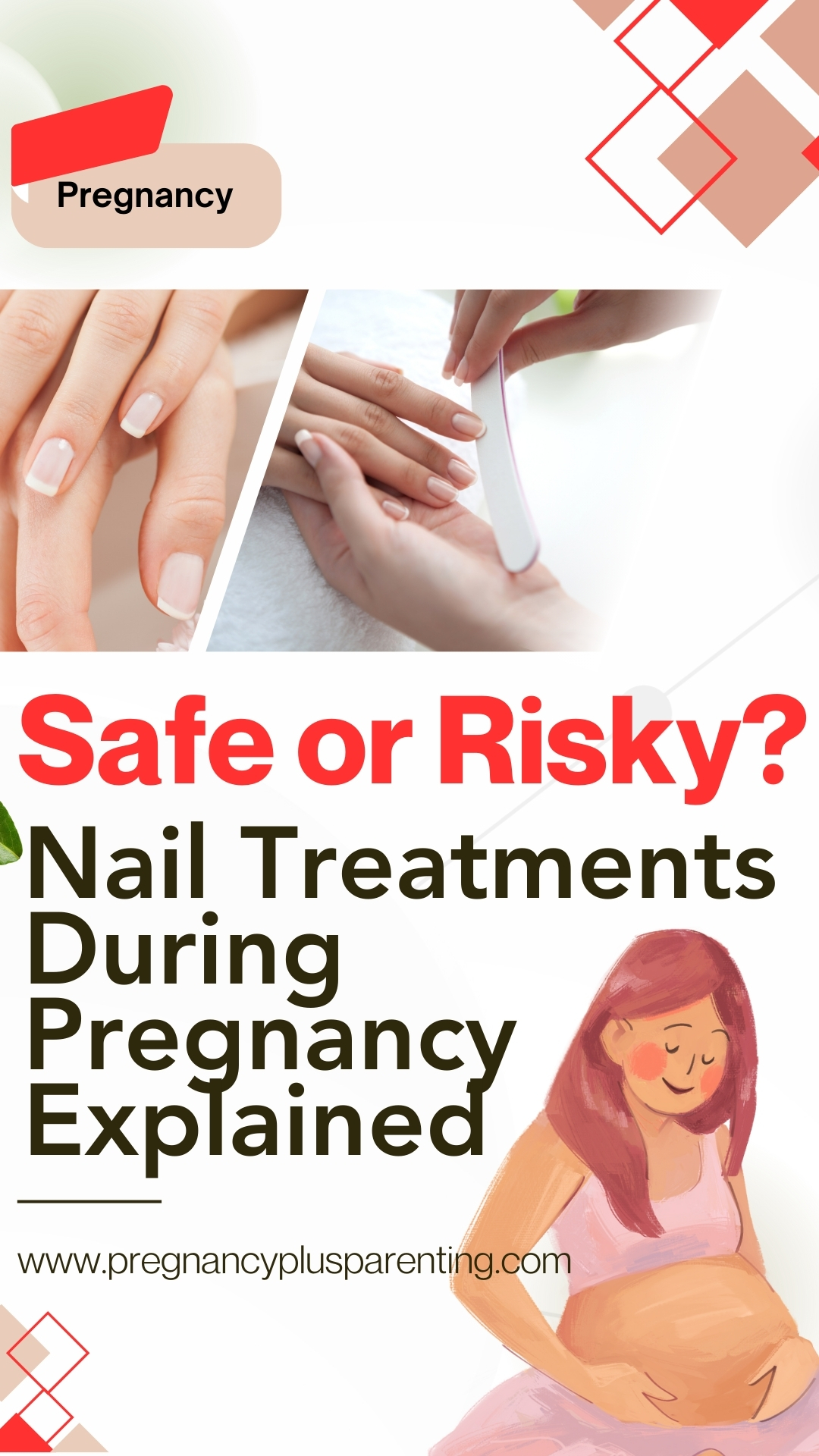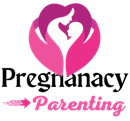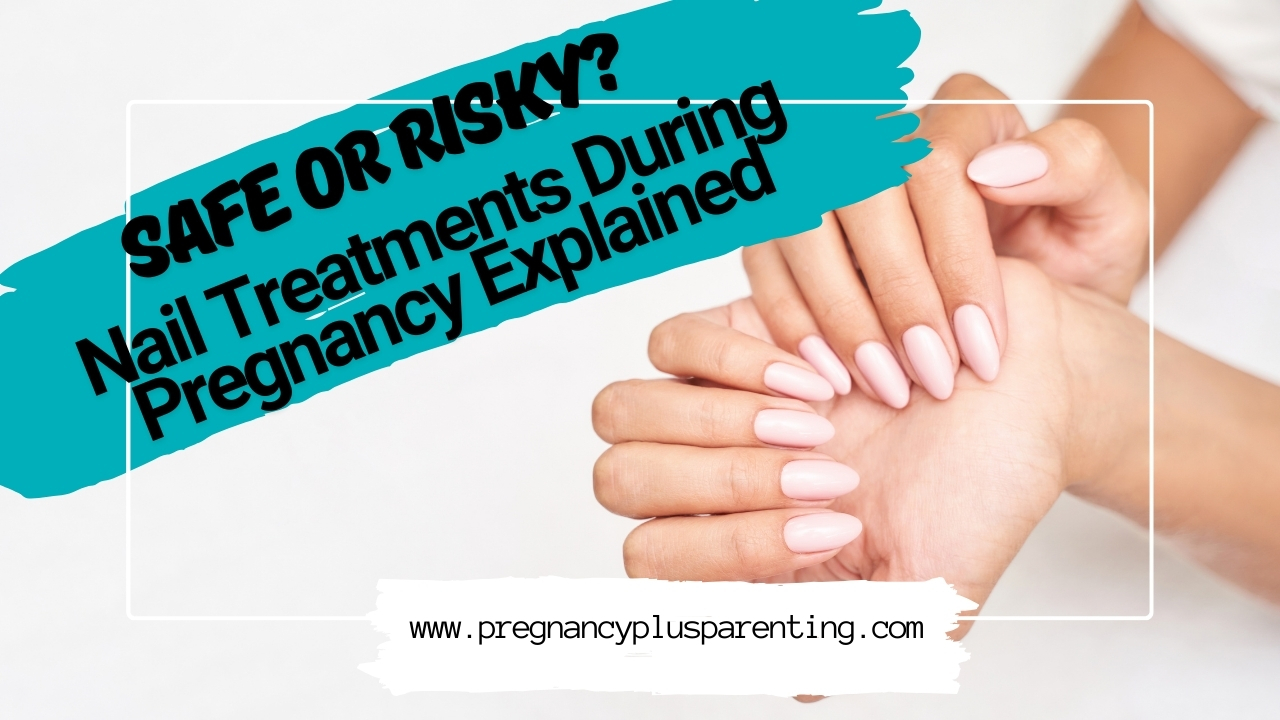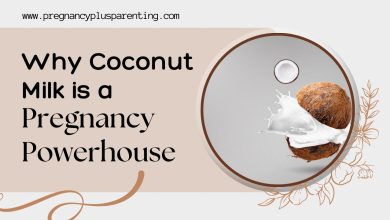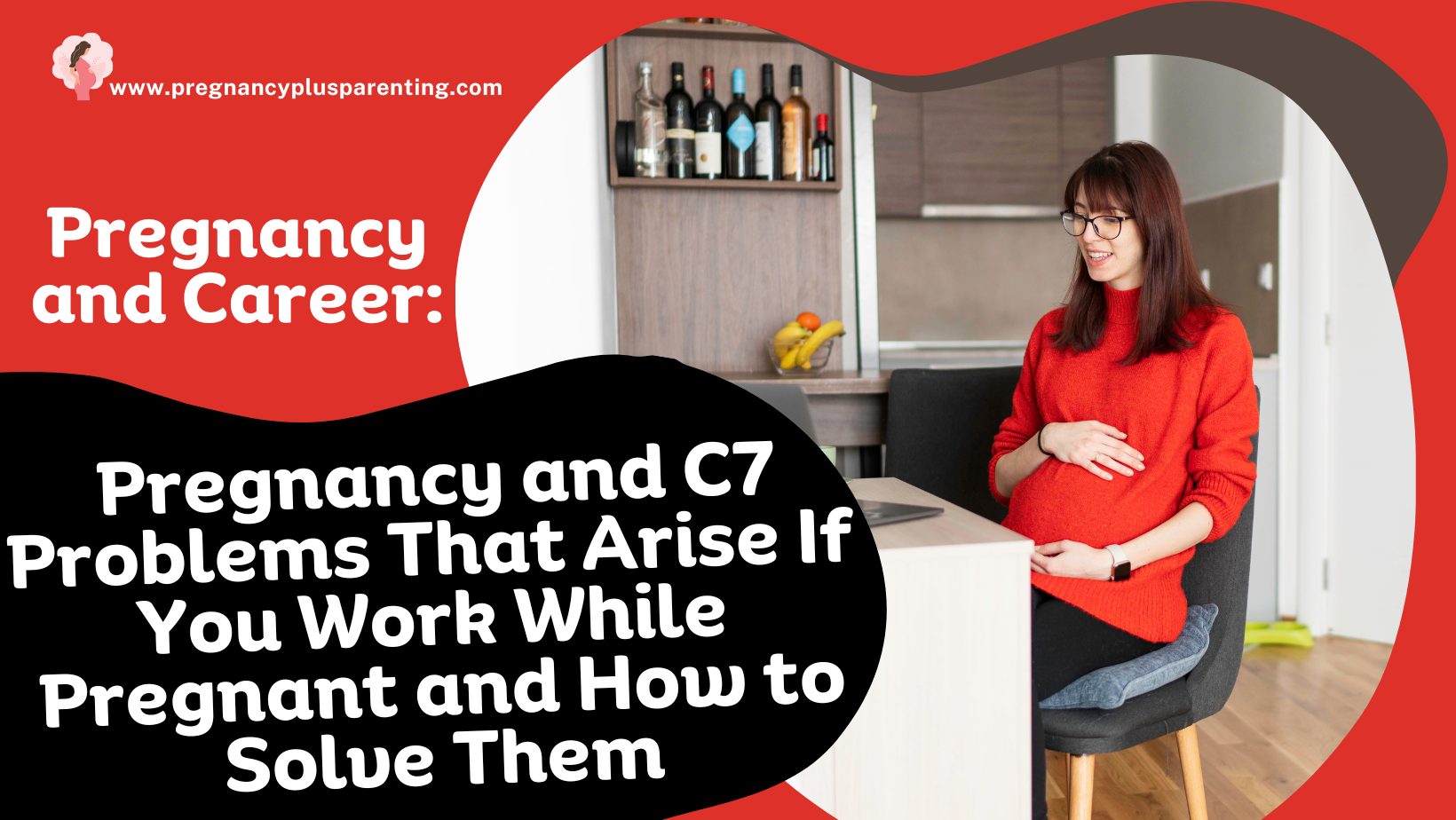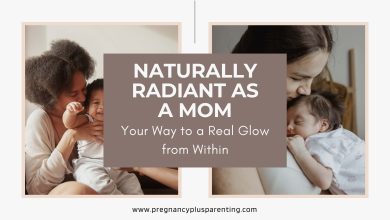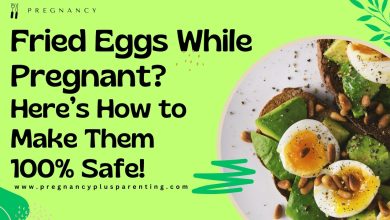Safe or Risky? Nail Treatments During Pregnancy Explained
For some women, regular visits to the nail salon are part of their beauty routine, but are acrylic and gel nails okay during pregnancy?
Or can artificial fingernails harm the unborn child?
Perhaps you first came up with the idea of treating yourself to nail modeling in early pregnancy and are not familiar with the different options?
You’ve noticed that with gel nails, the nail polish doesn’t smudge or chip, and that the nails stay looking well-groomed even for several weeks.
Of course, this is tempting, especially for those who are now suffering from brittle and splintered fingernails during pregnancy and conventional nail polish cannot keep up.
However, there are also downsides, whether with Shellac, gel or acrylic nails.
In addition to harmful effects on natural nails, modeling can also have a negative impact on your health.
Doing nails during pregnancy – In this article, I will discuss the differences between the procedures and explain whether there are health risks for the expectant mother and the child.
Gel nails during pregnancy – What dangers does Shellac pose?
Shellac is a resin-like natural product that the lac scale insect produces with its excretions to protect its offspring from harmful environmental influences after hatching.
As a purely natural product, Shellac has long been used in the cosmetics industry, for example in the production of lipsticks and mascaras.
Shellac has entered nail salons as a mixture of gel and nail polish. So, strictly speaking, after a Shellac manicure, you’re also dealing with gel nails.
However, there are significant differences in application. Shellac, a more adhesive gel, is similar to permanent nail polish, but it lasts longer and more firmly, up to three weeks.
However, nails with Shellac cannot be lengthened or strengthened, which is the difference to gel nails.
However, Shellac does not dry in the air like conventional nail polishes, but must be cured under LED or UV lamps.
Corresponding sets are now also available for purchase in stores, so that you can also do the manicure yourself at home.
Apart from the harmful effects of UV light, nails and fingers are also damaged when removing Shellac, as this can only be done with acetone or special tinctures that also contain other solvents.
Acetone-containing solvents are needed
To do this, the fingertips are wrapped in acetone or immersed in the solution for about ten minutes.
The chemicals not only make the nails dry and brittle, but also more susceptible to infection.
Therefore, you should take longer breaks between manicures and take intensive care of your nails and hands.
But organic solvents such as phenol, acetone and trichloroethylene, which are found in many nail polish removers, are not only harmful to skin and nails.
If pregnant women inhale these substances in large quantities, there is a risk of miscarriage, especially in the first weeks of pregnancy.
In addition, UV varnishes such as Shellac are not always natural products, but can also contain harmful chemical compounds, such as the hormone-disrupting and carcinogenic substances bisphenol-A and benzophenone.
In gel nail or acrylic nail models, you are often dealing with a lower concentration of questionable ingredients.
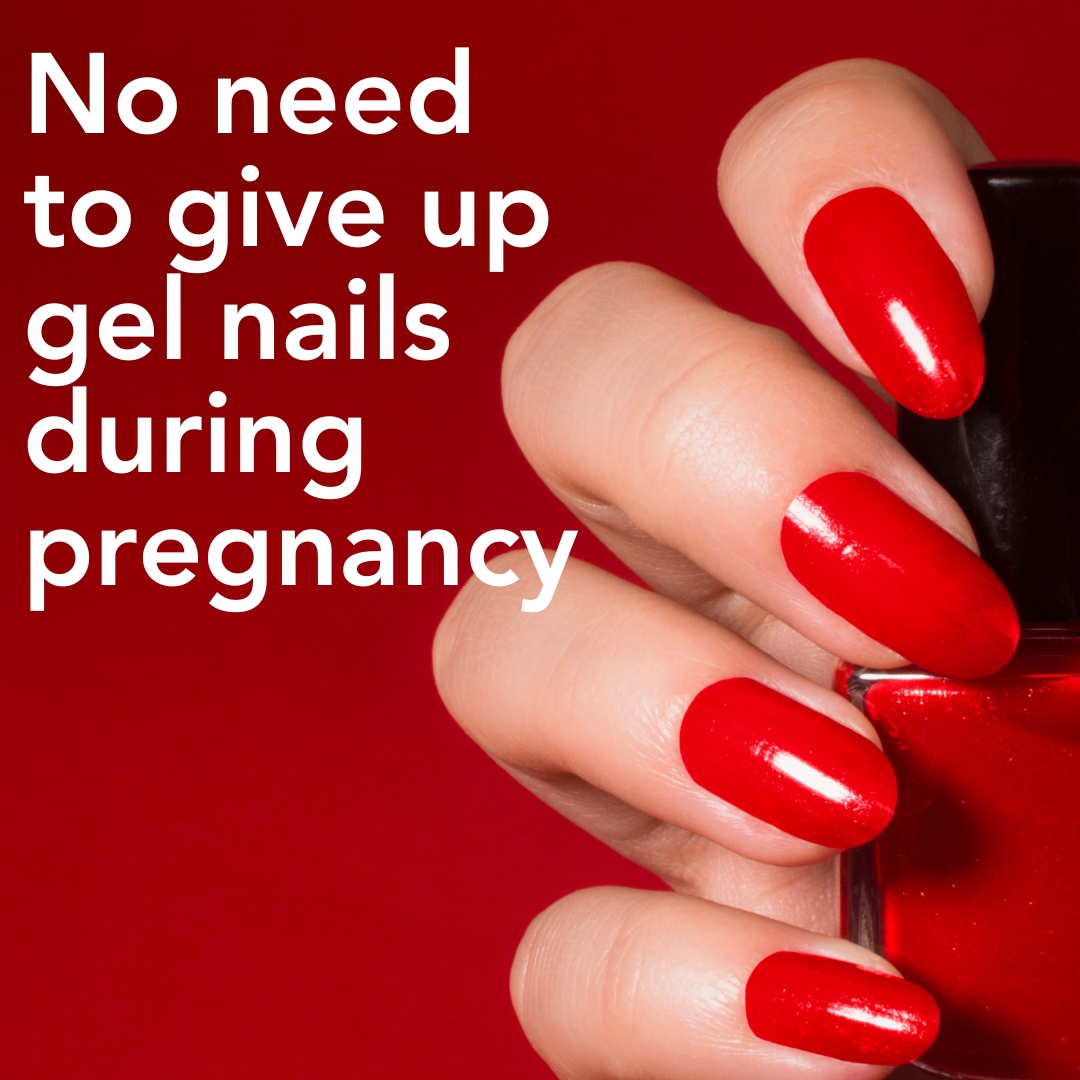
Gel nails during pregnancy: Danger from UV rays, infections and nail fungus
Gel nails look more artificial than natural nails treated with Shellac, but they also last much longer and always look well-groomed if you have the artificial nails treated regularly.
Gel nails used for nail modeling are made of plastic, which is non-toxic and is even used for dental fillings and in medicine to seal arteries and lacerations.
In this way, you do not expose yourself or your unborn baby to any toxic ingredients.
The question “Can you get gel nails during pregnancy?” can be answered with a resounding “yes.” However, you should still be careful.
Rough working methods can promote infections
Gel nails are made from several layers that are gradually applied to the nails.
Before modeling, each cuticle must be thoroughly removed and the nails must be degreased with acidic agents so that the acrylic can adhere well and premature cracks during the growth are avoided.
Removing the cuticles and treating the nail surface can cause infections, especially if the work is done roughly.
Our nails are actually made up of horny cells that ward off toxins when the surfaces are intact.
However, during modeling they are attacked and may allow pathogens to pass through.
UV light is used for curing
In addition, gel nails are usually cured under UV lamps after the layers have been applied in nail salons.
As mentioned, UV light promotes skin cancer, which has been scientifically proven.
You already know that and are therefore thinking about the right sun protection, especially for your child .
LED lamps are a good alternative.
When you first start looking for a nail technician, it’s best to ask whether they use LED or UV light in their studio and how the skin is protected.
As a rule, special gloves are worn or a cream with a high sun protection factor is used when UV lamps are involved.
Nail fungus has good conditions
The thick gel layer makes the nails appear harder, but the beautiful artificial nails prevent oxygen from reaching the horny layer of the natural nails, which is why it becomes thin, soft and brittle.
The roughened surface of natural nails already makes it easier for infections to spread.
Artificial nails increase the risk, because gaps can form between the gel and natural nail during the modeling process, in which fungi, yeast or mold can nest, which like it warm and lack oxygen.
Viruses and bacteria can persist because it is extremely difficult to clean the areas under gel nails.
This is one reason why employees in doctor’s offices, hospitals, nursing homes, and similar settings are not allowed to have artificial nails. Natural nails must also be cut short.
Because of the UV curing process, gel nails require sanding, milling, or filing. Regular nail polish remover is no good.
Although no acetone is used or inhaled during removal in this way, the process is certainly harmful to natural nails.
It takes about half a year for them to recover thanks to extensive care.
It’s best to ask beforehand which method the nail salon of your choice uses for removal, as there are also special acetone baths that can be used to remove gel nails.
Are acrylic nails a suitable alternative to gel nails during pregnancy?
The stronger sense of smell can further intensify the frequent nausea that is a typical companion of pregnancy.
When modeling acrylic nails, there is usually a significantly higher odor development.
It is not for nothing that it is assumed that pregnant women have a better sense of smell in order to be able to better protect themselves and the unborn child from harmful influences.
Anything that smells unpleasant is avoided – a survival strategy that is also justified in nail salons.
Acrylic nails are thicker and harder than gel nails and are made from a mixture of acrylic powder and modeling liquid that dries on its own.
UV light is therefore not required for acrylic nail modeling.
Because of the fumes and fine dust during modeling, it is advisable to wear a face mask.
Methyl methacrylate (MMA) can cause allergic reactions
However, if the strong smell of chemicals hits your nose and makes you feel unpleasant or even nauseous, then the nail salon probably uses methyl methacrylate (MMA) to model acrylic nails.
This chemical helps nail salons save on material costs.
MMA is banned in the US and Canada, and for good reason, as it is known to cause allergies that can lead to complications during subsequent dental or medical procedures.
Allergic reactions to MMA occur not only on the fingers, but also on areas of the body that have been touched.
They are characterized by reddened areas, itching, and blisters. For this reason, gel nails are recommended for pregnant women.
Alternatively, there are now also acrylic nails that harden under UV light and therefore do not produce an unpleasant smell.
Then it is important to use special gloves or an appropriate sunscreen cream, as with gel nails.
No need to give up gel nails during pregnancy
There are neither scientific studies nor proven side effects that indicate that artificial nails or even the usual nail polish during pregnancy are harmful to the baby.
This is probably mainly because it is not assumed that chemical or harmful substances can penetrate the surface of the nails.
As a precaution, any contact of nail polish, shellac, etc. with the skin should be avoided.
As an expectant mother, you bear great responsibility and try to avoid risks.
People avoid beloved foods such as smoked salmon, tea sausage or Camembert because dangerous pathogens can pass through the placental barrier and cause serious damage to the unborn child.
MMA poses no risk to the baby as long as limits are observed, but it can trigger allergies in the mother, even if this is not the first time she has come into contact with it.
The risk of nail fungus cannot be passed on to the baby in the womb.
There are also now nail polish removers that use less harmful solvents than acetone.
In general, such harmful substances are only used when there is sufficient ventilation so that they are not inhaled in large quantities.
In most cases, no solvent is needed to remove gel nails.
So it is not absolutely necessary to forgo your usual nail care during pregnancy.
However, it is better to refrain from buying sets for gel or acrylic nails and do the modeling yourself at home, especially if you have no experience with it.
If you already have a trusted nail salon, you will definitely inform your nail designer about your pregnancy and ask in more detail about the materials that are used.
By the way, it is also possible to have artificial nails made from fiberglass, which are made from glass fibers.
This makes them very durable and hard, and they also dry naturally. The process is also odorless, but significantly more expensive than conventional artificial nails.
If you’re not comfortable with artificial nail modeling and can’t put your reservations aside, but still don’t want to miss out on pretty, colored nails, then look for low-pollutant gel polishes like Shellac and organic nail polishes.
In any case, nail polishes that you would also buy for your daughter are suitable. Pay attention to the ingredients: They should be free of phthalates, toluene, and formaldehyde. The “3 Free” label will help you identify this.
The “5 Free” nail polishes also do not contain camphor or acrylates. Some manufacturers also offer “7 Free” products.
According to the manufacturer, CND Shellac is also “7 Free” and does not contain any toxic pollutants.
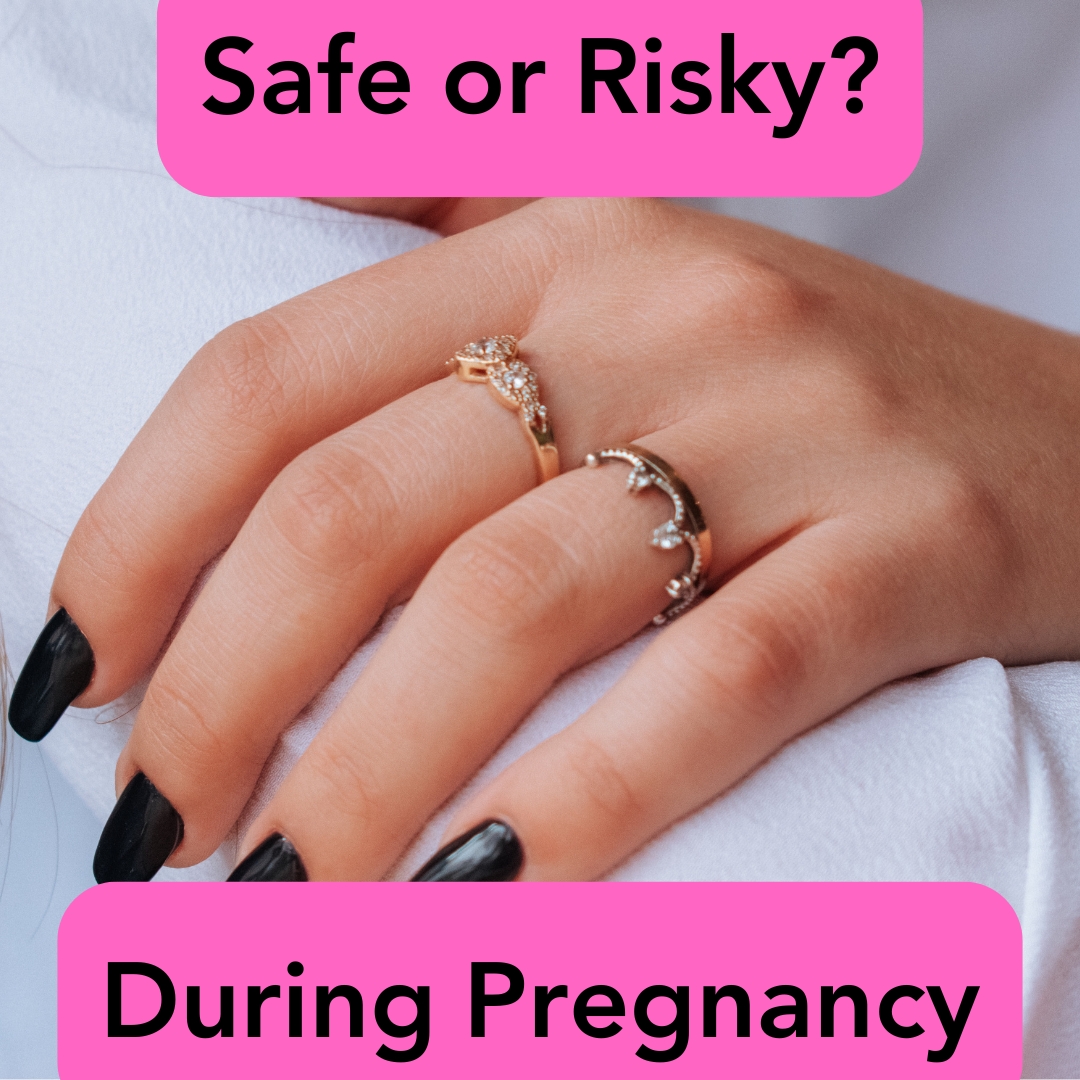
Hormonal changes can have a significant impact on gel nails during pregnancy
During pregnancy, hormones go crazy and can also lead to changes in the nails.
For some women, they become more beautiful and stronger, while others suffer from brittle and fragile fingernails.
After modeling, it can happen that gel nails do not stick and can be easily peeled off by hand after just a few days.
In other cases, however, the artificial nails hold even better than before. A different adhesive might help.
If you are one of the women who suffer from brittle nails during pregnancy, you should avoid artificial nail modeling.
If you want to use a nail hardener, make sure it does not contain formaldehyde, as this substance is carcinogenic.
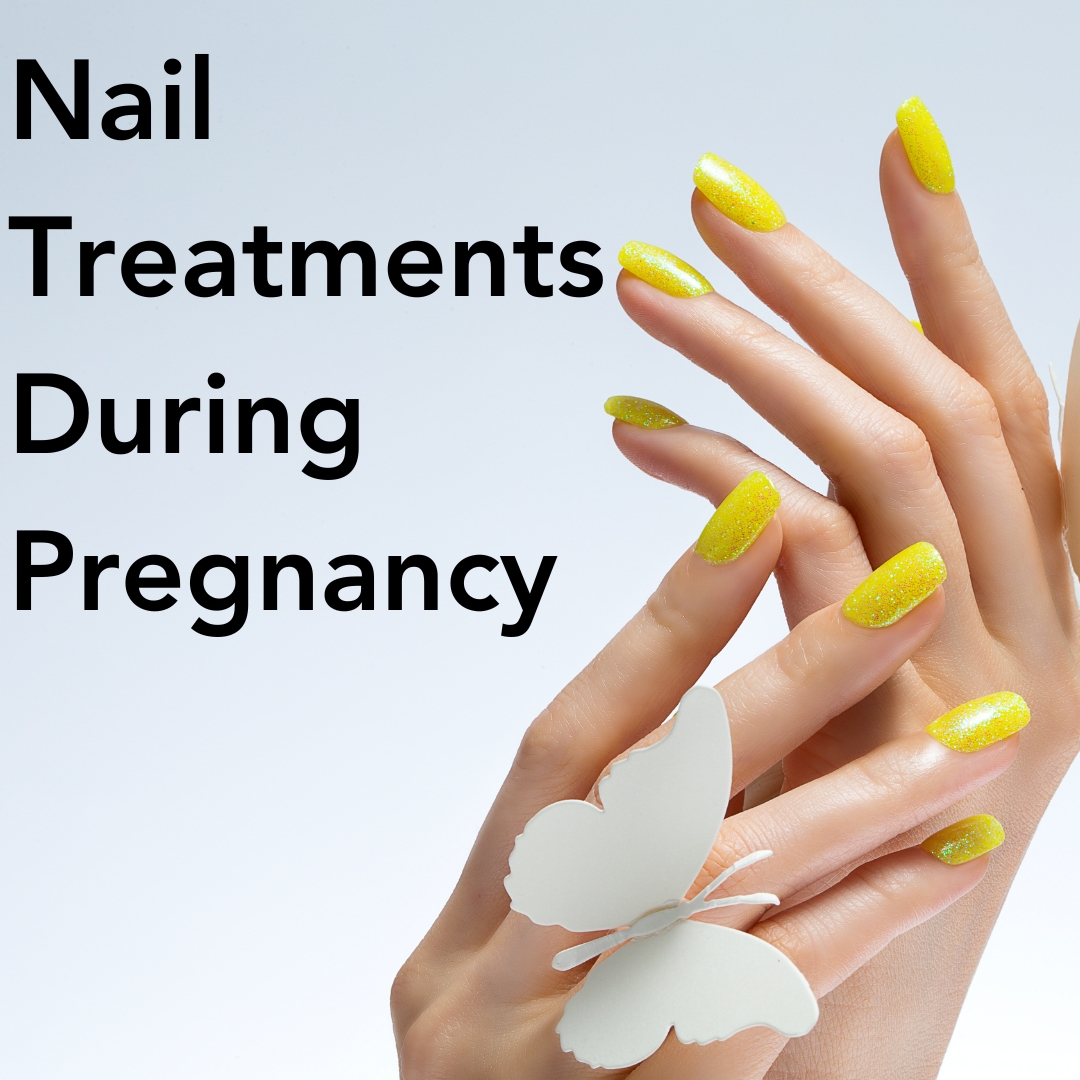
Final thoughts
Fortunately, you don’t have to restrict your cosmetic rituals at all or only slightly during pregnancy, and this also applies to nail care.
Nail plates are not made of skin cells, but of horny cells, which, as long as they are intact, provide excellent protection for the body from all kinds of substances.
Perhaps that is why there are no scientific studies on the risks of nail polish and artificial nail modeling.
Pregnant women are advised to switch to non-toxic nail polishes or to avoid getting nail polish on the skin or under the nail.
When modeling, the natural nails are first degreased and sanded so that the artificial nails can adhere.
This procedure makes the expectant mother vulnerable to infection. This poses a risk of fungal infection, especially if the procedure is not performed properly.
Unlike Shellac, gel nails are not removed in an acetone bath, but by filing.
Pregnant women should not inhale foods containing acetone, as larger amounts increase the risk of miscarriage.
In addition, when modeling acrylic nails, you should make sure that MMA is not used for the artificial nails, as it can cause allergies in the mother.
If you take a few precautions, artificial nails are not dangerous for your baby.
However, you will probably have to have them removed before the birth, as they are not welcomed in hospitals.
